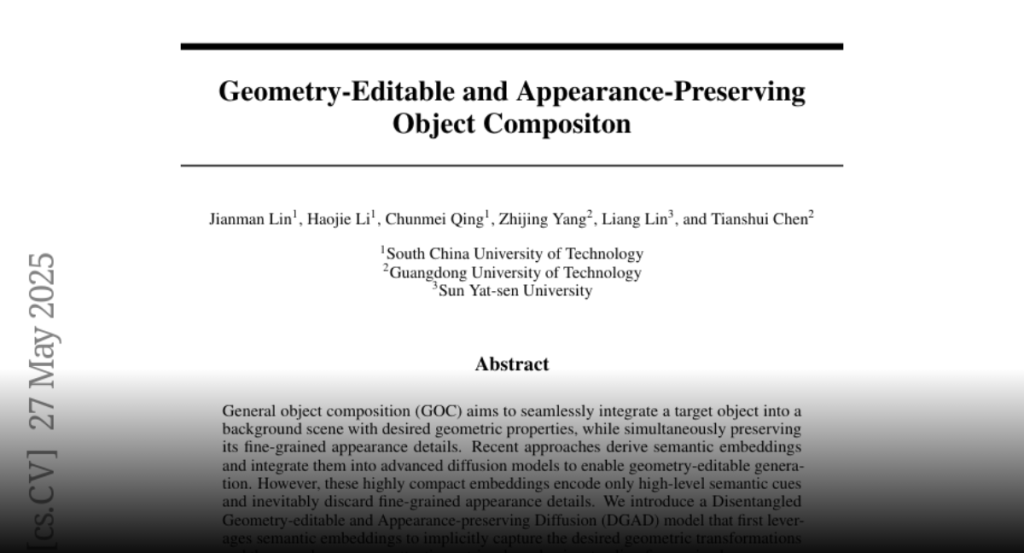The Disentangled Geometry-editable and Appearance-preserving Diffusion (DGAD) model effectively integrates target objects into background scenes by using semantic embeddings for geometry and cross-attention for appearance alignment.
General object composition (GOC) aims to seamlessly integrate a target object
into a background scene with desired geometric properties, while simultaneously
preserving its fine-grained appearance details. Recent approaches derive
semantic embeddings and integrate them into advanced diffusion models to enable
geometry-editable generation. However, these highly compact embeddings encode
only high-level semantic cues and inevitably discard fine-grained appearance
details. We introduce a Disentangled Geometry-editable and
Appearance-preserving Diffusion (DGAD) model that first leverages semantic
embeddings to implicitly capture the desired geometric transformations and then
employs a cross-attention retrieval mechanism to align fine-grained appearance
features with the geometry-edited representation, facilitating both precise
geometry editing and faithful appearance preservation in object composition.
Specifically, DGAD builds on CLIP/DINO-derived and reference networks to
extract semantic embeddings and appearance-preserving representations, which
are then seamlessly integrated into the encoding and decoding pipelines in a
disentangled manner. We first integrate the semantic embeddings into
pre-trained diffusion models that exhibit strong spatial reasoning capabilities
to implicitly capture object geometry, thereby facilitating flexible object
manipulation and ensuring effective editability. Then, we design a dense
cross-attention mechanism that leverages the implicitly learned object geometry
to retrieve and spatially align appearance features with their corresponding
regions, ensuring faithful appearance consistency. Extensive experiments on
public benchmarks demonstrate the effectiveness of the proposed DGAD framework.

